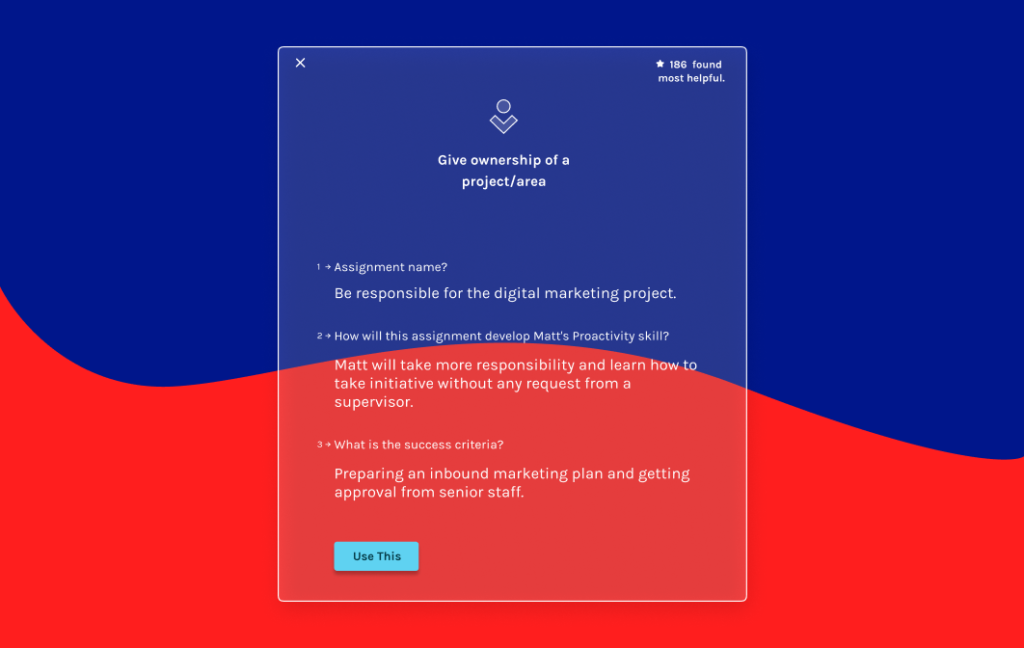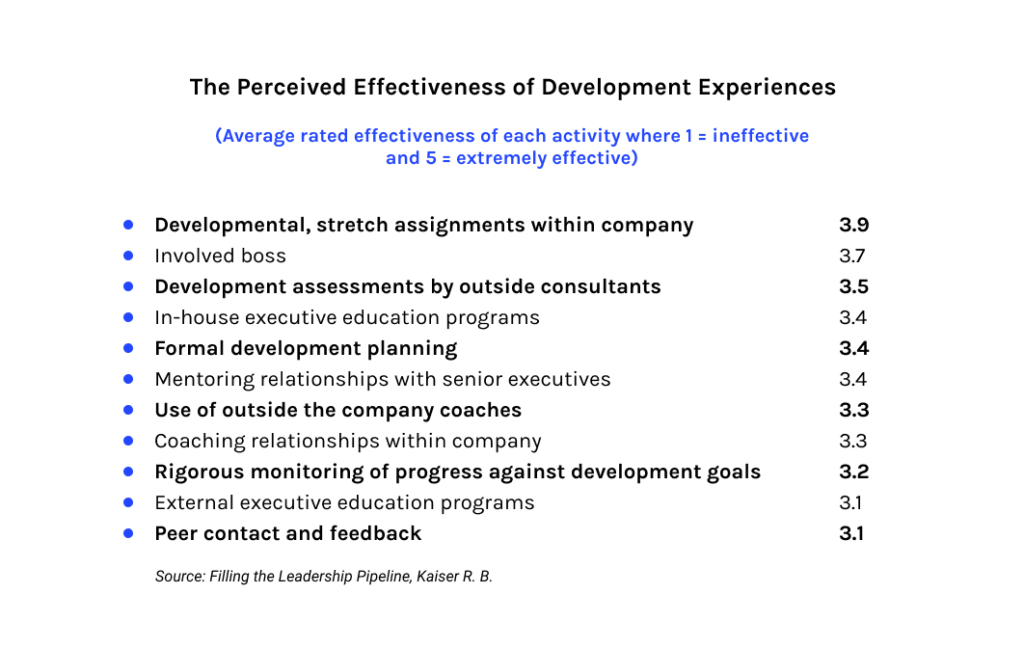Last Updated on November 5, 2021 – 7:48 am
Development plans are one of the best tools for HR leaders for people development. The Corporate Leadership Council’s Voice of the Leader study closely examined 17 different development interventions. According to the report, individual development plans (IDPs) are among the top two most influential development actions. Yost and Plunkett, the authors of Real-Time Leadership Development, says, “The single best strategy you have at your disposal to drive on-the-job development into the DNA of your organization is to encourage all employees to create an individual development plan.” Yet, “in too many organizations, development plans have little more than paperwork required by the HR department.”
So, what matters when creating an IDP? Here are the six best practices.
Just Setting Goals Make a Difference
A management study at AT&T that followed the progression of leaders over a 20-year period shows the power of goals. Interestingly, “the single greatest predictor who would eventually become an executive was their early ambition to be an executive.” Having a goal was a better predictor than IQ, EQ, personality, or management skills. Thus, just writing development goals can trigger development.
Assessments (i.e., 360 assessments) will also be much more effective if companies make sure their staff follow up with development plans. According to a comprehensive academic study on feedback and performance, feedback is most effective if it includes a formal goal-setting plan.
One Thing at a Time
It’s good to come up with a development plan, but it’s even better to come up with a development plan that focuses on one thing at a time for a specific period. When people set multiple development areas to improve, they lose focus. On the contrary, when they select only one thing, it is easier to focus and develop. As Mercer consultants Stringer and Cheloha note, “Most of us, if we are lucky, can work on a maximum of one or two things at a time. We can agree to ‘lose weight,’ ‘improve our disposition,’ ‘ask questions rather than tell people,’ ‘delegate responsibility and authority.’ But chances are we are incapable of doing all of them at once.” Another writer adds, “The forms can and often do get a lot more complicated -so much so they can begin to feel like a tax return. If the choice is between a sophisticated form that nobody uses and notes on the back of an envelope, go for the envelope!”
What should that specific period be? Chris Outram, a business consultant in Writing for INSEAD, says: “Define 90-day priorities for everyone in your organization. Everything now moves so fast that 90 days is probably the right point at which to assess whether the strategic objectives and goals are appropriate and achievable.”
The journey app also limits managers and team members to select only one development area every three months while creating IDPs. These are called three-month development sprints. See table 1 as a sample development plan for a marketing professional who uses Journey to improve her skills.

Focus on Plans Relying on On-the-job Experiences
Studies indicate that the majority (84%) of companies see an actively involved boss as the most crucial development resource. The second most important experience is stretch assignments (71%), followed by mentoring and internal coaching with senior executives. Development assessments by outside consultants rank third in effectiveness. See the list of experiences (below) that companies rely on to develop future leaders.

In “The Power of a Development Plan” article, Stringer and Cheloha note, “We have asked successful leaders over the years about major influences on their development as leaders. Not surprisingly, the vast majority do not mention books they have read, seminars attended, or consultants who have coached them. Often, they talk about a leader who was their boss, or someone they observed, or a particularly stressful experience. Their image of success is based on a real experience or a real person.”
Leadership is learned by doing or by watching someone doing. Morgan McCall, in his book High Fliers, stresses the developmental impact of work experiences. He says challenging, risky, stressful, and visible experiences which lead to success or failure as real possibilities are the most developmental ones.
“Unfortunately, most employee development plans are simply a list of training programs that the person plans to attend, even though we know that the bulk of development is on the job.” So, always make sure you put enough opportunities for on-the-job experiences into your IDP mix. Journey app, a people development software, nudges users to focus on on-the-job assignments while creating IDPs.

Mind the Three Critical Factors
Each employee needs an individual development plan that includes specific skills and personal growth components. But, it should also include the individual’s interests and motivational factors. The goals should consist of all three areas: competence, passion, and organizational need.
- Competence covers the areas of skill and ability in which employees naturally do well. Dr. Sue Bath, a Gallup consultant, emphasizes the importance of taking a “strengths-based development” approach. In this approach, managers must learn to identify team members’ strengths and how to use and build strengths to achieve those outcomes. “It should be done by focusing on celebrating successes and preparing for future achievements, and planning for development and growth opportunities,” she says. The most influential management guru, Peter Drucker, adds, “You cannot build performance on weaknesses. You can build only on strengths.” Thus, “We can’t make people better by trying to eliminate their weaknesses, but we can help them perform better by building on their strengths.”
- Passion is the thing that energizes employees. According to a researcher, the number one reason most personal development plans fail is that they ignore the importance of the individual’s energy and motivation.
- Organizational needs are activities or services that the organization greatly needs and values. Most IDPs are created in development conversations conducted with the managers. And manager direction is seen as the top motivator for employees in developing themselves. According to Journey’s study, When IDPs are full of development goals that do not add value to team performance, the manager’s involvement (follow-up and guidance) drops. Thus, IDPs should include the manager’s “carrot,” which is business-critical development.
The convergence of these three elements will determine individual development success.
IDPs are Living Documents
Always keep in mind that the best development plans are called “living.” Stringer says, “They are dynamic, not static documents. They are ‘alive’ and not made of stone. If new skill requirements are identified, if circumstances change, or if unplanned-for opportunities arise, a good development plan will be modified to acknowledge and take full advantage of the new situation”.
Evaluate
Finally, evaluation systems are an important part of the process to ensure the program is having the desired impact. Efficient IDPs have to be measurable in terms of effectiveness and positive growth. Paul R. Yost and Mary M. Plunkett say, “Assess if the training actually led to behavior and performance changes after people have attended. If training programs were truly based on the business strategy, they should also impact the business metrics that are important in the company”. Follow-up development meetings every three months, organization-wide tracking of metrics to assess systemic changes, and early feedback are crucial in heading in the right direction and keeping track. And when you are redesigning the IDP, rate each activity to come up with the right mix next time.
If you want to learn more about employee development, you can check out our resource center here.






Leave A Comment